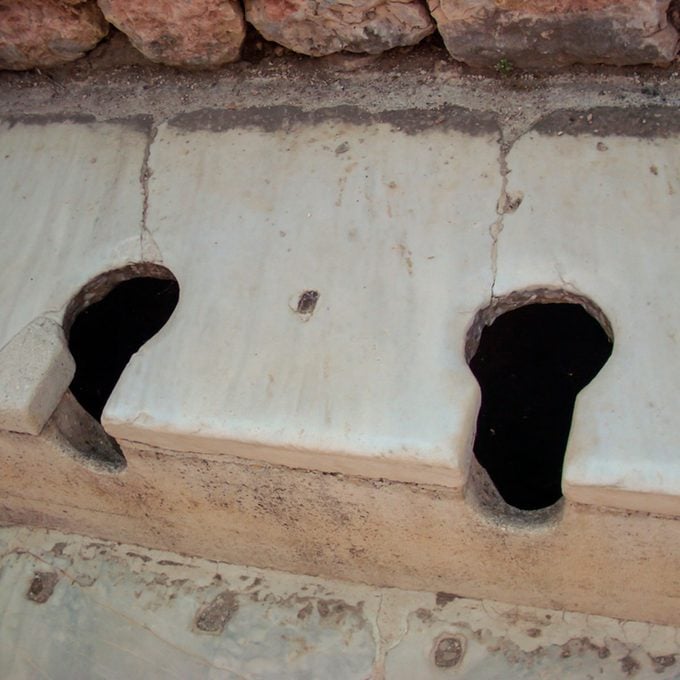The Toilet Seat: A Brief History
Updated: Apr. 12, 2024
Toilet seats have come a long way.

Toilet seats have come a long way.
The toilet seat dates back 2,000 years to the Han Dynasty in China, when it was simply made of stone. In ancient times, a toilet seat was a luxury. Latrines featuring just a hole in the ground could be found lined up in public places. The toilet seats were nothing more than a part of the communal bench where the holes for doing your business were cut out. In fact, a true toilet seat was at one time provided only for the rich people.
In Ancient Egypt, they had proper bathrooms and toilets in their homes with toilet seats made of limestone. In Ancient Rome, wealthy people also had their own toilets, while public bathrooms consisted of stone seats right next to one another. Check out the different toilet seat shapes.
In the Middle Ages, toilet consisted of pits in the ground with wooden seats over them. Medieval castles had vertical shafts for toilets with a stone seat at the top. These were called ‘garderobes.’ They jutted out of the side of the castle. Poor people of this time lived in huts and used dirty pits for toilets. They sat on wooden planks as toilet seats.
Over time, the toilet seat became more common and eventually made it’s way into most homes. Today, the toilet seat is a hinged unit typically made from plastic using a type of thermoplastic called polystyrene, or a blend of wood and plastic. It consists of a round or oval open seat that typically has a lid bolted onto the bowl.
People from centuries past would likely be impressed to see how far the toilet seat has come. There’s now slow-close seats that use special hinges to prevent the seat from slamming down. There are high-tech toilet seats too, with features like a heated seat, a bidet and a blow drier. While you’re at it, learn how to measure a toilet seat properly so that you don’t buy a wrong one.